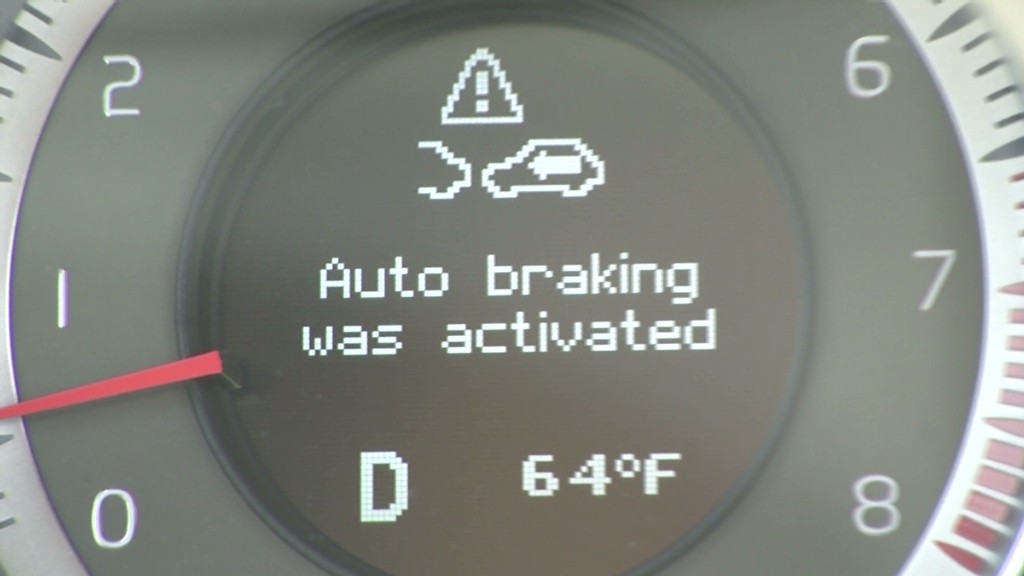Automatic braking by the system after sensing an obstacle can be executed in two modes. In collision avoidance, the collision is avoided by the automatic braking, but the driver will not be warned in this type of system. There is a very good chance of wrongly interpreting the signals, especially in the case of radars or lasers. So this is not so effective method of automatic braking. In collision mitigation system,the sensors detect the possibility of collision but will not take immediate action. A warning will be sent to the driver in the form of a signal or a voice message. There is a threshold safe distance calculated by the system and if the driver fails to respond even when the vehicle crosses that region, then only brakes will be applied automatically. Even if there is a
A warning will be sent to the driver in the form of a signal or a voice message. There is a threshold safe distance calculated by the system and if the driver fails to respond even when the vehicle crosses that region, then only brakes will be applied automatically. Even if there is a mis-interpretation of signals, there is no problem because, the decision to apply brakes is left with the driver and the brakes are applied automatically only in the most emergency situations. Many vehicles are provided with the option of turning on or off the automatic system based on their surroundings. In some automobiles even though they cannot be completely disabled, they can be limited to warning the driver about coming obstacle. Even this emergency braking initiates ABS which help the driver to retain the control over vehicle without any skidding. Automatic braking system is only effective if the mode of sensing the obstacles is reliable, or else any kind of false interpretation may cause a lot of damage.

In some automobiles even though they cannot be completely disabled, they can be limited to warning the driver about coming obstacle. Even this emergency braking initiates ABS which help the driver to retain the control over vehicle without any skidding. Automatic braking system is only effective if the mode of sensing the obstacles is reliable, or else any kind of false interpretation may cause a lot of damage.
Ten automakers have committed to the government and a private safety group that they will include automatic emergency braking in all new cars, a step transportation officials say could significantly reduce traffic deaths and injuries.
Automatic emergency braking includes a range of systems designed to address the large number of crashes, especially rear-end crashes, in which drivers do not apply the brakes or fail to apply sufficient braking power to avoid or mitigate a crash. The systems use on-vehicle sensors such as radar, cameras or lasers to detect an imminent crash, warn the driver and, if the driver does not take sufficient action, engage the brakes.
The systems could prevent or mitigate an estimated 80 percent of the auto and commercial truck rear-end collisions that cause about 1,700 deaths and a half million injuries annually, according to a recent report by the National Transportation Safety Board. There are about 1.7 million rear-end crashes each year in the U.S.
